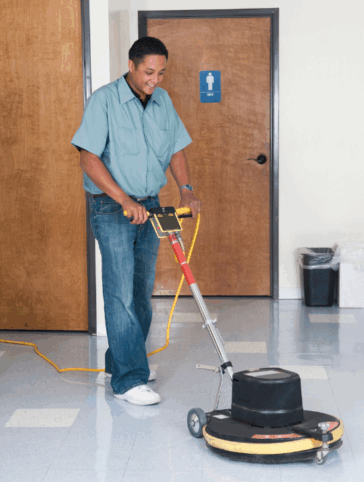
May 13, 2025
How to Reduce Your Janitorial Company’s Ex-ModWorkers in the janitorial industry keep our spaces clean and sanitary. In the course of their hard work, they may put themselves at risk. Here’s a look at some of the new risk trends that have developed in recent years, as well as information on how employers in the janitorial sector can manage their exposures and keep their workers safe.
It’s hard to discuss new risks without discussing COVID. The pandemic has increased awareness surrounding the importance of good hygiene and cleaning practices. For the workers tasked with disinfection, COVID safety is a key concern.
The CDC says that the risk of infection via contaminated surfaces is low, but it’s not zero, either. The CDC also says that fine droplets and aerosol particles that carry the virus can stay suspended in the air for minutes to hours.
Given these transmission risks, workers who are cleaning areas contaminated with COVID could possibly be at risk for exposure to the disease. Depending on the laws in their state and the details of the situation, these workers may be able to claim workers’ compensation if they get sick. The National Conference of State Legislatures says that 17 states have taken steps to provide workers’ compensation coverage to workers who get COVID-19.
Employers may also face liability if a worker contracts COVID and then spreads it to someone else. This is what happened in a wrongful death case involving See’s Candies, an employee, and the employee’s wife, according to Reuters.
Car crashes aren’t exactly a new threat, but the risk has increased over the last couple of years. For janitorial workers who have to drive from site to site, this is a significant concern.
The National Highway Traffic Safety Administration says that 20,160 people died in motor vehicle crashes in the first six months of 2021. This is an 18% increase compared to the same period in 2020, and it’s the highest number of deaths since 2006. During the pandemic, incidents of speeding and traveling without a seatbelt increased.
The Bureau of Labor Statistics says that 4.5 million workers quit in November 2021. That’s a record.
Businesses have been reporting high turnover rates and difficulty finding enough workers for several months now. For the janitorial sector, these workforce issues could result in safety issues. For example, when companies are understaffed, employees may be asked to take on a heavier workload. When workers are stressed and tired, they may face an increased risk of injuries. Additionally, new workers may not have the experience needed to avoid safety risks.
New risks deserve attention, but it’s also important to keep old risks in mind.
According to OSHA, the following hazards are a concern for the cleaning industry:
By promoting safety, companies can reduce injuries, costs, and liability.
Prevention is best, but in case something goes wrong, you also need the right insurance coverage, risk mitigation, and claims response. Tangram offers workers compensation designed for the risks of the janitorial sector. Learn more.